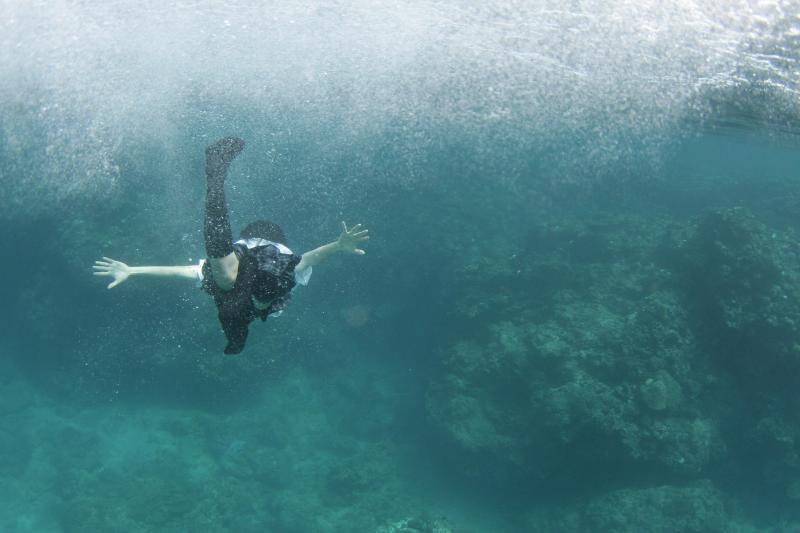
Last week at the press conference, the President of the Jury for the Official Competition, Jane Campion — the only woman to have won the Palme d’Or, the festival’s most prestigious prize — made comments about how the film industry is very much still a boy’s club. In fact, last year’s competition featured no female directors and this year’s features only two, so it’s no surprise that there’s been much hubbub about how Naomi Kawase’s “Still the Water” could be a frontrunner for the Palme. It certainly is the sort of film that tends to get rewarded at Cannes. It feels to me like it’s trying almost too hard at times — it is pointedly aimed at being poetic in addition to tenderly made and beautifully shot. Critiques aside, its success would mean another landmark win for a woman.
The film is a story of two families told through the eyes of two adolescents falling in love: Kyoko (Jun Yoshinaga) and Kaito (Nijiro Murakami). Unlike Kaito, Kyoko is an only child in a family full of love and affection. For example, we see them on a lazy afternoon, lovingly resting in each other’s laps — Kyoko in her mother’s and her mother in her father’s. They’re helping each other through a difficult time as Kyoko’s mother is dying of an unexplained illness. Near the beginning of the film, in fact, we see them preparing her hospital bed for her to come home to, setting it up to face a 400-year-old tree.
Kyoko is in love with Kaito, the kind boy-next-door who often gives her lifts on his bicycle — she stands on the back with her hands on his shoulders as he peddles. This is one of the film’s most potent images, as they ride quickly on the road with the beach in the background, recalling Antoine Doinel’s famous last run toward freedom in “The 400 Blows” and the exuberance of the boy with the bike in the Darennes’ film. Kaito also loves Kyoko, but he’s hesitant to express it. When she suggests they make love, he, to her confusion, is reluctant. Unlike Kyoko, he’s from a broken home, and after watching his parents’ marriage dissolve and his mother jump from man to man, he’s afraid that Kyoko’s affections might be only temporary.
The film’s best scenes are those showing the two of them tentatively exploring their feelings. Sitting by the water in crepuscular light, she makes a provocative comment about the way the sea is like making love and quickly kisses him. Kawase pushes the camera in close to them, lingering on the duo long after they’ve kissed, as they sit, foreheads touching, caressing. If there were ever a perfect image of first love, this would be it.
Kawase is very much concerned with the passage of time and with the cycles of life. It’s telling that the first images of the film are of waves lapping toward the shore, a party with dancing and then a goat’s throat being slit. She practically bulldozes you with the concepts of permanence and impermanence, and thus the importance of seizing the moment. Sometimes, this overt juxtaposition yields deeply moving scenes: When family and friends serenade and dance for Kyoko’s mother on her death bed, Kawase turns her focus from the placid, contented face of the mother to the joyous dancing. But the pervasive obvious imagery makes the film annoyingly predictable, and it becomes an excuse for avoiding deeper character development. “Still the Water” is such a forced attempt at creating art — Kawase has even described it as her masterpiece — that it never quite achieves greatness. As a Cannes prospect, it might be dead in the water.
Contact Alexandra Heeney at arts “at” stanforddaily.com.
